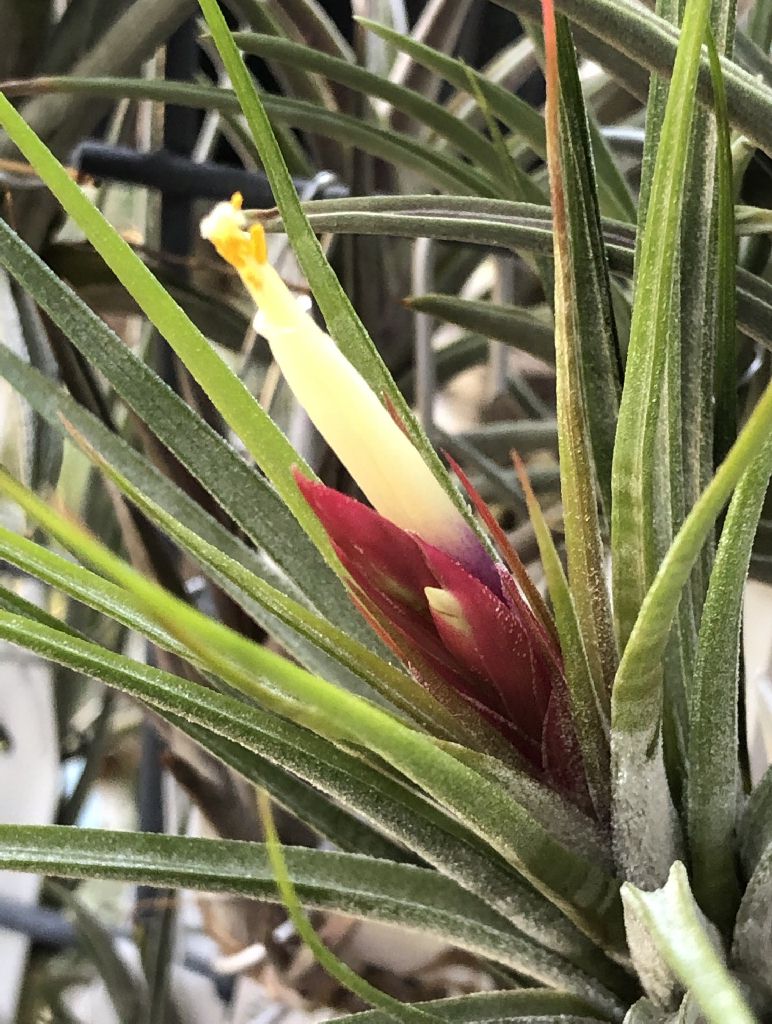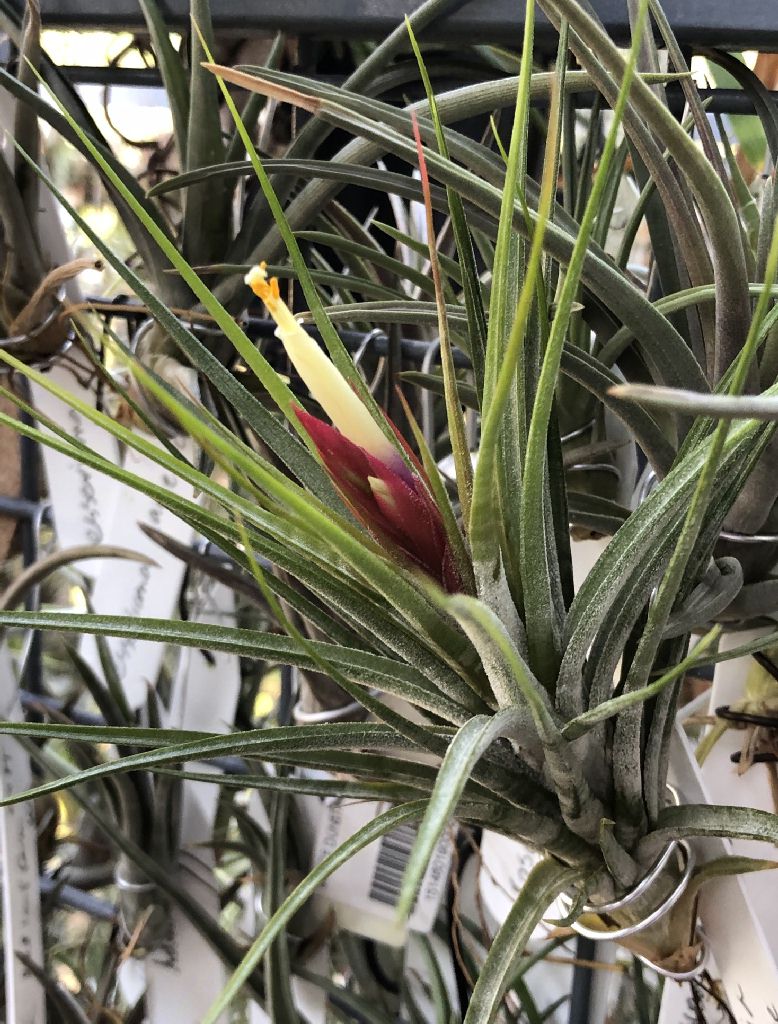
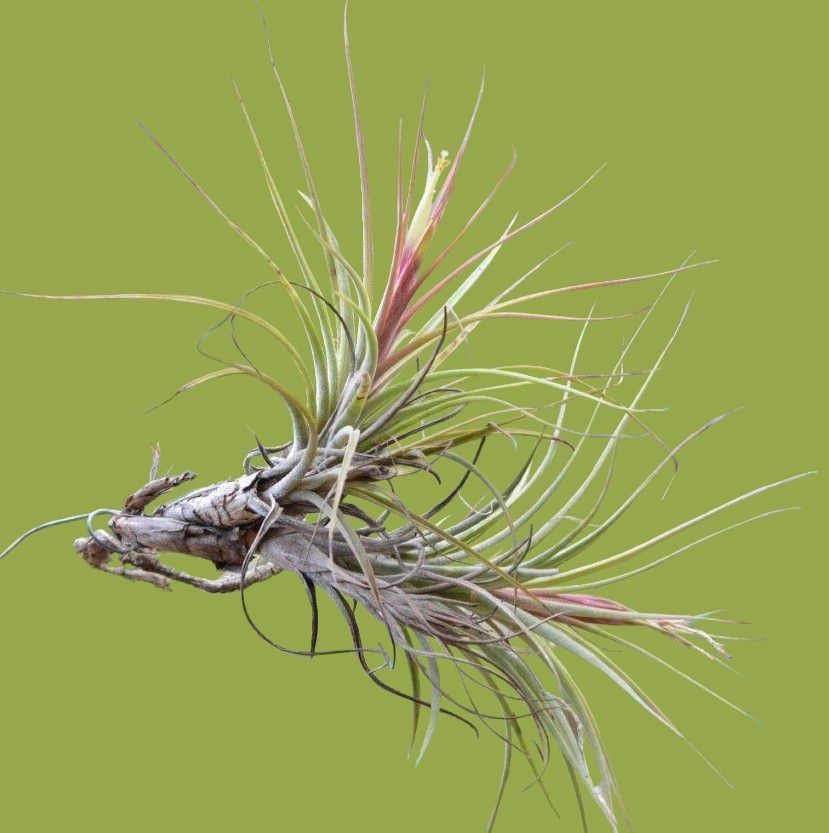
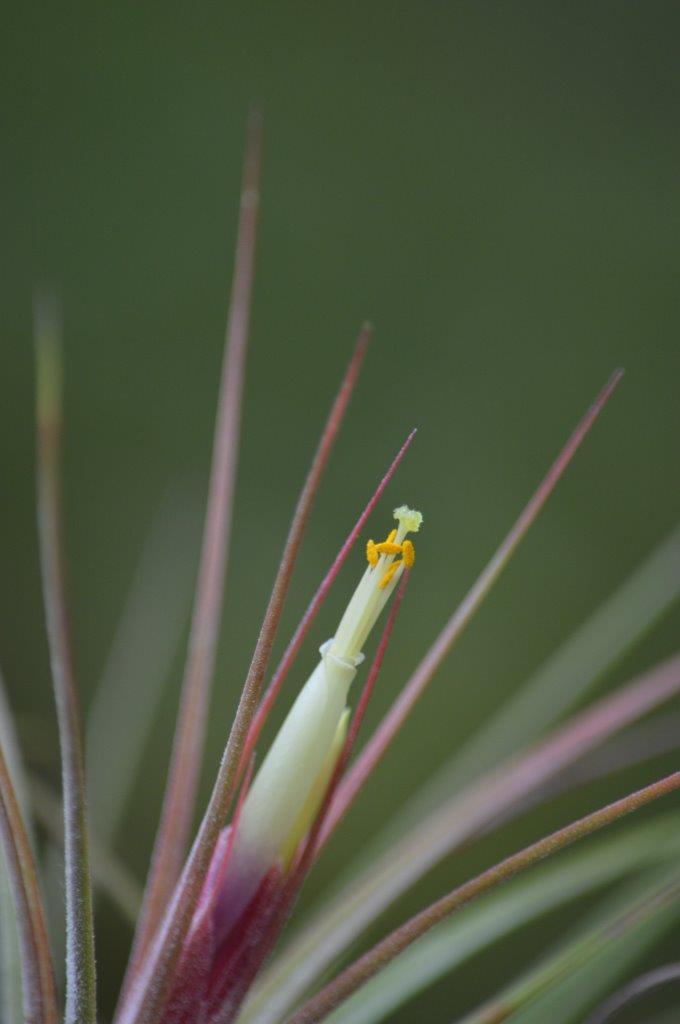
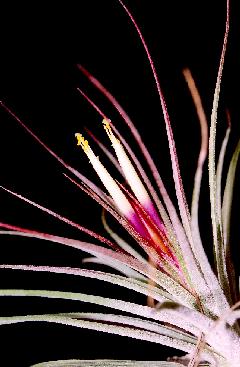


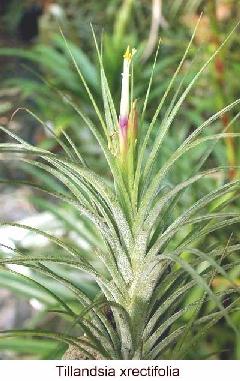

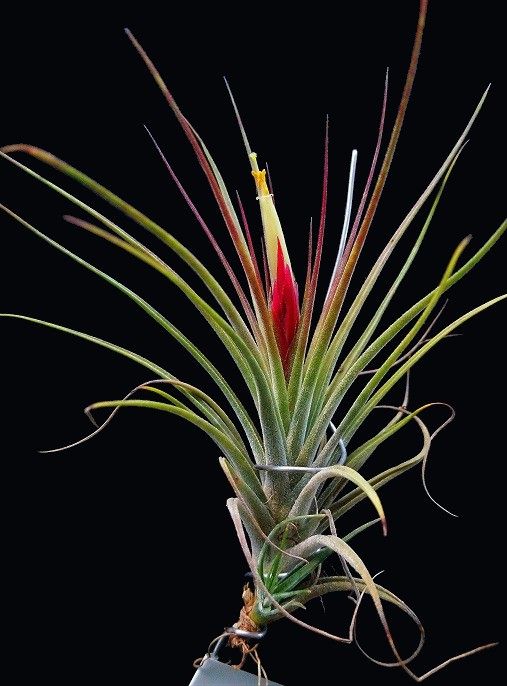
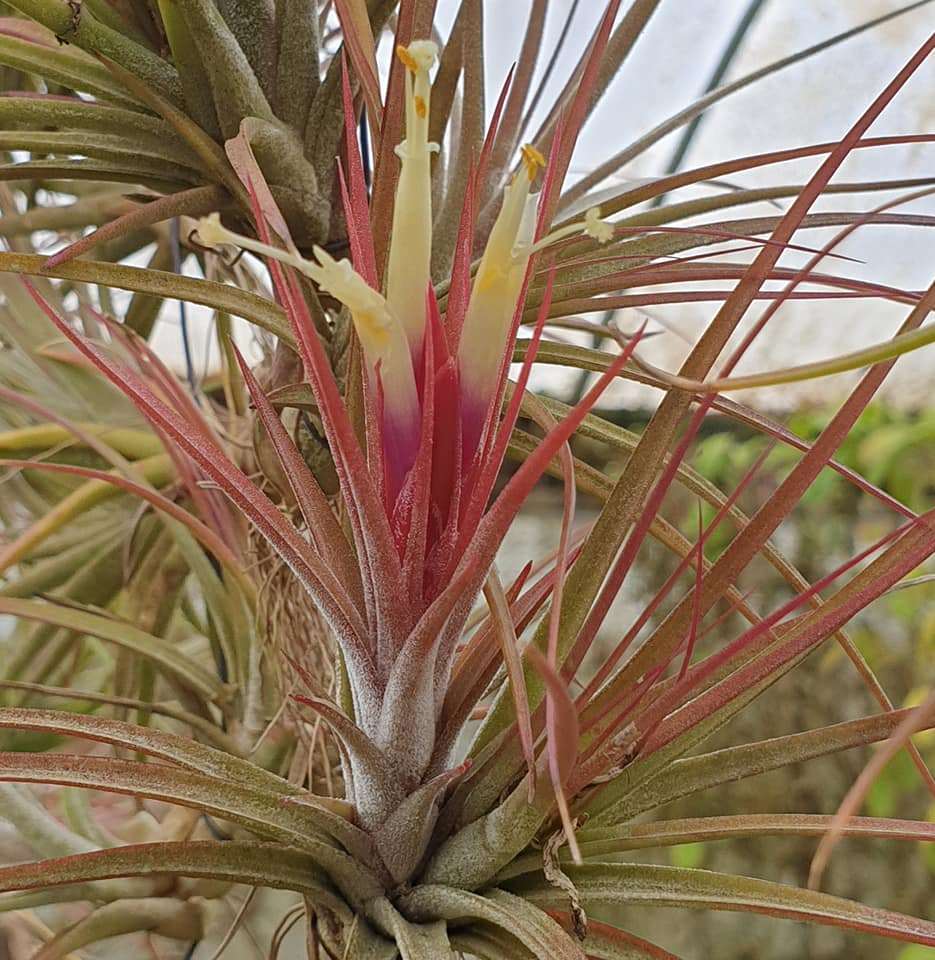
Natural hybrid: Tillandsia ionantha Planchon x Tillandsia schiedeana Steudel.
SPECIMENS EXAMINED. Mexico; without locality, flowered in cultivation at SEL, July 1988, H. E. Luther s n. (SEL). Costa Rica; Prov. Alajuela, 1,000 m, 1987, D. Cathcart & W. Berg s n. (SEL).
A number of natural hybrids have been reported in Tillandsia (Gardner, 1984; Read, 1984; Luther, 1985) and several additional taxa first described as species probably represent hybrids. These hybrids are usually uncommon within a population of the parental species but are often commonly met with in cultivation as sharp-eyed collectors frequently select them because they look different and usually have horticultural appeal. Tillandsia x rectifolia is to be expected where-ever T. ionantha and T. schiedeana occur as sympatric populations.
See also Tillandsia ‘Jack Staub’ a man made hybrid with same parentage which interestingly was named and described before the above in J Brom Soc 29(1): 28-9. 1979!
Tillandsia rectifolia Wiley Trop. und Subtrop. Pflanzenwelt 31:7 – 9, 1979
Planta acaulis, florens usque ad 15 cm alta; folia pauca ( 10- 15) rosulam erectam plus minusve 10 cm altam angustam formantia, vaginae oblongo-ovales indistincte limitatae, vaginis aequales; laminae anguste triangulatae, acuminatae, canaliculatae, supra basim usque ad 6 mm latae et 10 cm longae dense cano-lepidotae; scapus inflorescentiae brevissimus in rosula occultus; phylla scapi basali subfoliata, superiora ovali-lanceolata, acuminata, cano-lepidota; inflorescentia erecta foliis rosulae brevior, simplex, usque ad 4,5 cm longa et 10 cm diametiens, pauciflora, a foliis superata ; bracteae florales usque ad 30 cm (? mm) longae, 8 mm latae, lucentirubrae, lepidotae, etiam in apice leviter nervatae, ecarinatae, polystichae; sepala lanceolata, usque ad 20 mm longa, 6 mm lata, usque ad
basim libera, posteriora carinata, membranacea nervata, albida glabra; petala erecta apice paulum revoluta, in tubulam angustam coniuncta, superiora ad 2 cm cremoricolora, basalia ad 3 cm roseo-violacea vel purpurea; antherae cum stylo longe exsertae.
Habitat: Mexico centralis (locus distinctus ignotus); leg. Fritz Kubisch, Los Angeles/Calif. USA.
Holotypus: in herb. inst. bot. system. univers. heidelbergensi (HEID, BGH Nr. 46 l5l).
Translated by Derek Butcher.
Plant stemless, flowering to 15cm high, leaves 10-15, erect, making a narrow rosette 10cm high.
Leaf Sheath longish oval, indistinct.
Leaf blade similar colour to sheath, narrow triangular acuminate, channelled, 6mmwide near sheath, 10cm long, dense grey lepidote.
Scape very short, hidden in rosette.
Scape bracts the bottom ones leaflike, the upper ones oval-lanceolate, acuminate, grey lepidote.
Inflorescence erect, shorter than the leaf rosette, simple, to 4.5cm long, 10mm thick, few flowered, exceeds the leaves.
Floral bracts to 30cm (? mm) long, 8mm wide, bright red, lepidote, weakly nerved at tip, not keeled, longer than the sepal.
Flowers few, to 5cm long, polystichous.
Sepal lance-like, to 2cm long, 6mm wide, free, posterior ones keeled, membranous, nerved, whitish, glabrous.
Petal erect, recurved at tip, united in a closed tube, the upper 2cm cream to white, the bottom 3cm pinkish-violet to purple.
Stamens and Style widely overhang.
Habitat and range: Central-Mexico (actual location unknown). Collect: Fritz Kubisch, Los Angeles/Calif.
Holotype: Herb. Inst. Syst. Bot. University Heidelberg (HEID). BGH Nr. 46 156.
This quite remarkable little plant that easily flowers in culture, characterized especially by its tight upright rosette leaves (fig. 2, left), which form a narrow funnel-rosette. This recalls something like T. ionantha Planch. var. scaposa L. B. Smith, but differs in a lower number of rosette leaves and the bi-colour flowers, which are white in the upper third and blue-violet to purple at the base. Normally, coloring of petals is vice versa.
The plant was collected by the American Bromeliad fancier, F. Kubisch with T. ionantha in Central Mexico, unfortunately without exact location. We surmise that T. rectifolia is a natural hybrid with T. ionantha and an unknown partner.
